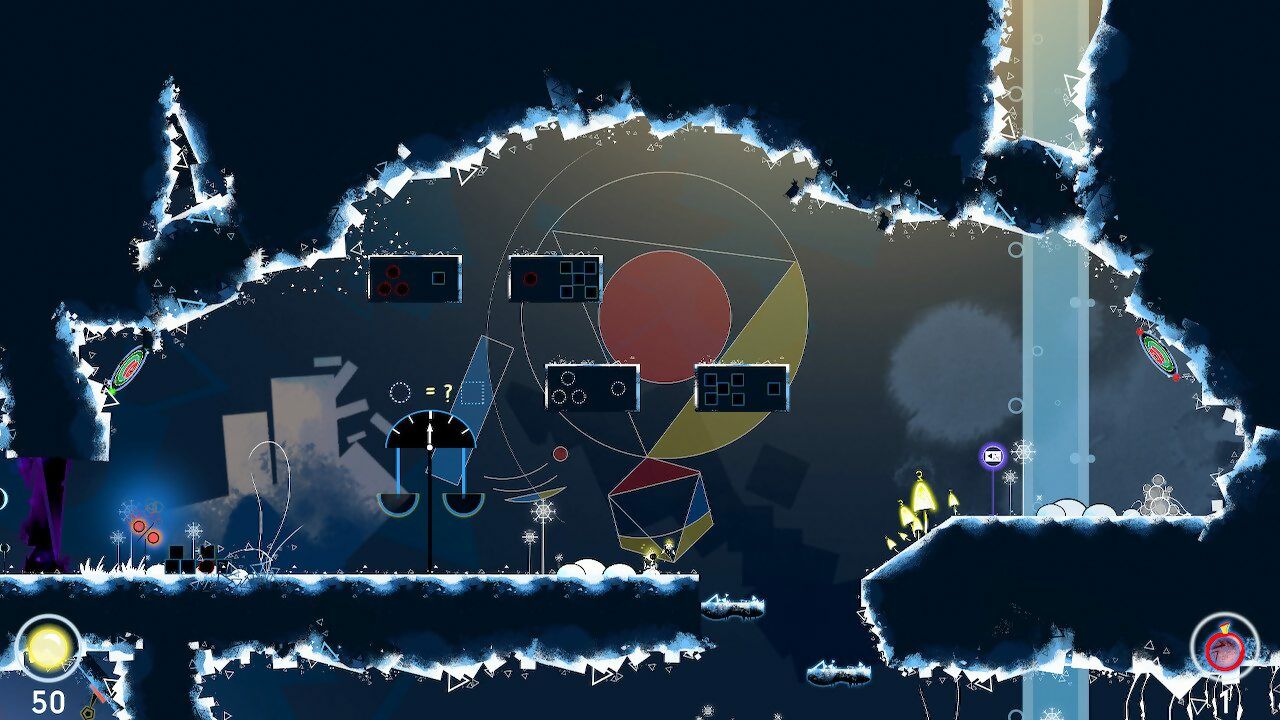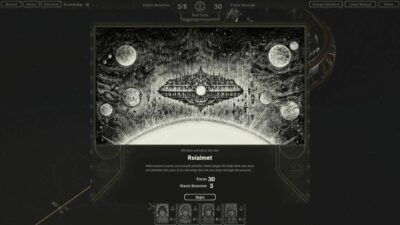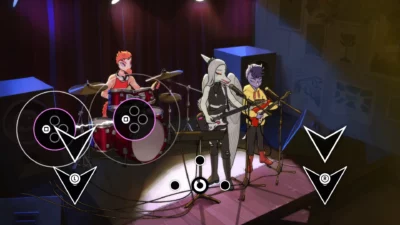
A Tale of Synapse has problems expressing itself. Most obviously in the English version of its script, with conversations and explanations damaged by wayward grammar and vocabulary choices. But more fundamentally, in the struggle it has with visual communication and the language of its puzzles. Never mind English, Synapse doesn’t speak fluent video game.
The concept’s an enticing one. Platform puzzles injected with maths, where gates are opened by hitting switches to change numbers to fit equations, levering platforms to align with points on graph axes, or activating pressure panels with polygons of specific dimensions. Yet most solutions are either strangely simple, or simply strange, based on the information you’re given.
The maths itself is straightforward, either way. It’s just that often it feels like there’s a gap in the setup, some absent logic to connect the equation in front of you to a necessary course of action. In one case, for instance, it’s clear the game wants you to make two sets of cubes and circles add up to 10, but only accepts 9+1 as an answer. Later, a solution is in the number of flowers located near certain symbols, when no such environmental clues have been in play before. At least early on it’s easy to brute-force solutions, from which you might work backwards to comprehend what you did. But as the puzzles complexify, crowbarring off the padlocks turns into guessing their combinations.

Finding other characters hidden around the levels is a continuous secondary objective
It would help if the flowers and other pertinent objects were at least better defined, but this is the other thing. A Tale of Synapse is quite pretty, with backgrounds that graft symbols and geometric shapes onto natural formations of trees and stalactites. But that’s a lot of muddle when you’re looking for sharp parameters, especially when the camera forcibly zooms out to frame larger puzzles. And while you can consult a spartan behind-the-scenes view which displays the key variables, that often adds obfuscations of its own.
Visual hindrance is a problem in combat, too. Although the real mystery there is why there’s combat at all. The dark, blobby enemies you encounter are trivial distractions with no bearing on the puzzles. They seem to exist merely to justify a skill tree of ability upgrades, which in turn exist solely to encourage a diligent search for currency. And then clumsy controls ensure both jumping around and hitting things are less fun than they might be anyway. Indeed, control issues even stretch to the game’s menus, each of which obeys different rules. Sometimes an exit to the title screen is just a tap of the pause button away.
A Tale of Synapse has a friendly atmosphere, some pleasing sights, and a handful of intriguing puzzles – who doesn’t want to win a boss fight with sums? But if the beauty of maths is in transparent, reliable logic, this is a game that betrays its subject matter. Much of its design just doesn’t add up.
Highlight
The one neat link between the world of maths and platform games is that the shapes you use to solve conundrums are also physical objects in the world. At times, it’s not only a case of finding the right number and types of shapes to activate a switch, but also stacking them into makeshift stepladders.
Verdict: 33%
An attempt to bring maths into platform gaming that’s sadly miscalculated.
Genre: Platform-puzzle Format: Switch (tested) / PC Developer: Souris-Lab Publisher: Tesura Games Price: £13.49 Release: Out now SOCIAL: @ATaleOfSynapse





